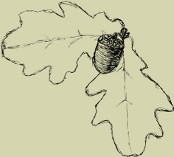42 41 40 39 38 37 36 35 34 33 32 31 30 29 28 27 26 25 24 23 22 21 20 19 18 17 16 15 14 13 12 11 10 9 8 7 6 5 4 3 2 1
Zeszyt 28 (1997)
The authors developed a special grinding wheel for grinding sides of MDF panels and examined its application. As the result of rotatable design of experiment, the mathematical model of the research subject was achieved giving the approximation of durability of grinding wheel with different hardness in various machining conditions. The usefulness of the grinding wheels for grinding of MDF panels sides was proved on the ground of the investigations. It was kept for the entire life of the tool. The best results were gained using grinding wheel with the hardness of 160 MPa. The optimal grinding speeds and feed rates for grinding wheel with the grit size No. 36 in relation to the thickness of removed layer were established.
Key words: grinding, MDF, grinding wheel, structure, durability, self-sharpening, honing, critical velocity
The properties of organosolv and kraft hardwood pulps fibers were determined by chemical analysis and FT-IR spectroscopy methods. It was stated that organosolv pulps contain more native cellulose (type C1) than kraft pulp.
The infrared spectrum of organosolv pulps is different in comparison with kraft pulp. In organosolv pulp, independently on kind of wood (birch, poplar, beech) and organic solvent (glycol, ethanol) close correlation between the integrated intensity of absorption bands at wave numbers 1730, 1600, 1500 cm−1 and kappa number was observed.
In the case of birch kraft pulp the integrated intensity of absorption bands at wave numbers 1500, 1620, 1730 cm−1 are markedly lower than in organosolv pulps, although a value at the wave number 1600 cm−1 is several times higher.
From our investigations is follows that the structure of cellulose, lignin and hemicelluloses in hardwood pulps depends, first of all, on the kind of cooking liquor.
Key words: cellulose pulp, organosolv wood digestion, sulphide wood digestion, FT-IR spectroscopy, cellulose structure
Possibilities of utilizing of lignins as an organic material renewable and available in large amount result from their chemical structure and properties of their aqueous solutions. Lignins were modified by their conversion to polyester derivatives. As an initial material commercial sodium lignosulphonates Ultrazine NAS and Borresperse NA from Norwegian Borregaard company were used. Modification was carried out by means of terephthaloyl chloride in dimethylecetamide solution with presence of pyridine as an acceptor of HCl released. The influence of process conditions on the properties of the modified lignins was evaluated. As a results of the reaction between sodium lignosulphonates with terephthaloyl chloride the thermoplastic polyester like modificates were obtained. The products are bronze to beige coloured solids of melting point within the range of 278-340°C. The IR spectra of the modificates are characterized by the existence of absorption bands of 1735 and 1720 cm−1 corresponding to vibration of ester groups both aliphatic and aromatic ones.
Key words: lignosulphonates, lignin modification, terephthaloyl chloride
Polyester-like thermoplastic products obtained as a result of the reaction between lignins and terephthaloyl chrolide were examined. Steam exploded lignin (L) and sodium lignosulphonates (LS) were modified with terephthaloyl chloride. Some molecular and thermal properties of lignin modificates were determined. As a result of TG analysis it can be stated that modified product have higher temperature of a maximum weight loss than initial lignins. In thermograms of the initial lignins only endothermic peaks at 124 and 121°C for LS and 111°C for L can be observed. In case of modified LS the additional enothermic peak at 401°C is noticed. It is probably caused by thermal decomposition of the products. For modified product of LS an exothermic peaks at 313°C is observed. Molecular properties of lignins and products of their modification were evaluated using gel permeation chromatography (GPC). Due to GPC application a comparison of molecular weight distribution both for lignins and for products of their modification was possible. As it an be seen from the plots modificates have higher average molecular weight values than unmodified lignins. Maxima in curves of molecular weight distribution for modificates correspond to higher molecular weight values than the appropriate maxima values for initial lignins.
Key words: lignosulphonates, lignin modification, terephthaloyl chloride, properties
An attempt was undertaken to characterize macrostructure of Scots pine (Pinus sylvestris L.) wood, which was grown in conditions of forest type fresh coniferous forest, that is type of forest most often occurring in Polish forests. Macrostructure was expressed as average width of annual increment, width and share in annual increment of spring and summer wood, share of sapwood and heartwood in the volume of usable stems of trees.
Key words: fresh coniferous forest, growth ring in thickness, share of summer wood, sapwood, heartwood, volume of usable stem of tree
Attempt was undertaken to determine the formation of dependence upon share of sapwood and heartwood in the mass of stems of Scots pine (Pinus sylvestris L.) and some biometric parameters of trees. Studies were devoted to analysis of interdependence of two kinds of wood and breast diameter of trees, length of crowns, area of crown projection and number of whorls of living branches in pines grown in conditions of fresh forest.
Key words: Pinus sylvestris L., biometric parameters, share of sapwood and heartwood, breast diameter, fresh forest
Phenol-formaldehyde resin, modified by furfural, displayed good physico-chemical properties and was characterized by increased reactivity and dry-solid contents as compared with commercial resin. Analysis of infrared spectra (FT-IR) showed that incorporation of furfural into resin structure is accompanied by appearance of additional intra- and intermolecular hydrogen bonds. Positive strength results were obtained when gluing at 130°C and were up to the standard as for as requirements of norm PN EN 204 are concerned.
Key words: synthesis, phenol-formaldehyde resin, modification, furfural, FT-IR spectroscopy, joint strength
Preliminary trials of improving wood preservatives based on the quaternary ammonium compounds were carried out. Three copper compounds: copper chloride, copper sulfate and copper acetate in various quantitative patterns were used. The toxic values (ED50, ED100 and LD) for the Coniophora puteana and ED100 for Trichoderma viride were determined.
Key words: QAC wood preservative, copper salts, modifying of wood preservative, screening test, Coniophora puteana, Trichoderma viride
European aspen wood was investigated immediately after cutting, after its 2 and 4 months storing in order to determine its impregnation ability. Samples were done from outer and inner zones of wood. Bath method in solution of sodium fluoride during 15 min, 2 and 8 hours was used. Liquid absorption was determined in g/m2 as well as its depth of penetration across to the grain and along the grain.
Key words: European aspen wood, impregnation ability, bath, penetration, sodium fluoride
The influence of the amount of hardener based on 20% solution of AlCl3 on the properties of two component PVAC adhesives applied in woodworking industry was determined. The conventional viscosity, rheological characteristics, pH value and ope assembly time were determined in liquid state of adhesives. The solid content and relative hardness was studied for solidified adhesive layers. Strength and water resistance according to durability classes D3 and D4 of PN EN 204 standard was tested for glue lines.
Key words: PVAC adhesive, hardener, property, glue line, strength, durability
The theoretical maximum adhesion was determined regarding action of surface forces in system beech wood — two component PVAC adhesives, for hardening of which were used diversified amount of catalyst (5 ± 2 w.p./100 w.p. of adhesive) in form of 20% solution of AlCl3.
On the base of measurements of value of wetting angle of surface of hardened adhesives layers were determined surface free energy, work of adhesion, and surface tension on the interface of phases with dispersion and polar shares.
Key words: PVAC adhesive, hardener, wettability, adhesion
Studies were carried out to better recognize dependence between wood structure and its fracture energy, and acoustic emission activity induced at frictionless splitting test. The experiments were made on pine (Pinus sylvestris L.), oak (Quercus petraea Liebl.) and beech (Fagus sylvatica L.) splitted in tangential (TL) and radial (RL) planes. The splitting test was carried out according to the method worked out by Elmar Tschegg of Technical University of Vienna and Stefanie Stanzl-Tschegg of University of Agriculture in Vienna.
Key words: pine, oak, beech wood, frictionless splitting, crack propagation, fracture energy, acoustic penetration
Radial variation of selected parameters in anatomical elements in approximately 80-years-old ash trees was studied.
Radial gradient of early vessel elements, their lumen cross section, and the gradient of their content in wood tissue (R2 = 0.91-0.97) could be applied for assessment of the boundary location between juvenile and mature wood at a stem cross section. A demarcation line between juvenile and mature wood in tested ash-tree stems was set at 30th annual growth. In juvenile wood zone there could be distinguished two sub-zones, i.e. sub-zone of real juvenile wood (immature wood) from pith up to 15th annual growth and sub-zone of immaturate wood from 15th to 30th annual ring.
Key words: Fraxinus excelsior L., fibers, vessel elements, age of growth rings, juvenile wood, mature wood















 Pobierz PDF
Pobierz PDF